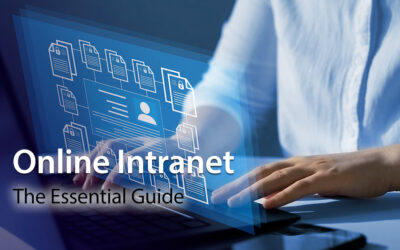If you’re going to put in the time and effort to create an intranet, you want to be sure that you’re working with an intranet design that will improve employee engagement and enhance productivity throughout your company. It’s existence alone isn’t enough. You don’t just need to know how to build an intranet, whether you’re working from an intranet template or designing your own from the ground up. You need to know how to build an intranet with beneficial features that will cover all of your employees’ needs.

2. Keep it simple: The ultimate success of your intranet may rise or fall on this single piece of advice. Chances are, as you ask the various individuals throughout the company what they consider to be most vital in the company intranet, you’re going to get a long list of features. Try to narrow it down: there’s a difference between an “interesting” feature or one that “might” be useful and one that will make or break the success of the intranet for a particular department. Narrow it down so that you aren’t throwing out too many pages or too many features. Then, choose to simplify as much of the process as possible. 
3. Make it easy to use: Your employees are a diverse array of individuals, and you have to build your intranet for all of them. Some of them are tech-savvy, adapting to new technology in the blink of an eye. Others still wish that their computers were running Windows 95. Your intranet needs to be easy enough for all of them to figure it out quickly and easily in order to be effective. In many cases, your intranet may rise or fall within the first month of use. If your users don’t understand that point, they’ll probably already have given up on it or found other ways to get the information they need, so keep your intranet design as simple and intuitive as possible. Pay particular attention to navigation: the harder it is to find important information, the more difficult your users will find your intranet to be.
4. Start slow: After you’ve invested so much time and money in your intranet design, it may be tempting to throw everything into it at once. If it can go on the intranet, it ought to be there, right? Actually, it might be better to start the process slowly. Not everyone has dedicated hours to studying intranet design and the chances are, they don’t have the hours to dedicate! By introducing new features slowly, you give everyone time to adapt to the existing features before throwing something else at them. Ideally, you’ll want to start with the most vital features, the ones that you expect your users to get the most out of. Then, slowly add in the other features until you have a fully functioning intranet that serves all the roles you envisioned when you began the intranet design process.

6. Give them the training they need: You’ve spent weeks pouring over your intranet design. You now know everything there is to know about building your intranet, using it, and applying that knowledge. Unfortunately, other employees within the company don’t! No matter how intuitive you think your intranet design is, take the time to offer training for as many employees as possible. The better they understand the intranet, the more likely they will be to use it. Make sure that at least one person in every department fully understands the intranet design and functionality so that they can ask questions as needed.
7. Know how to measure success: Before you deploy your intranet, ask yourself this: how do you know that it’s working effectively for your company? You can build an intranet from the ground up and never really understand what you’re hoping to accomplish with it. Instead of falling into this trap, take the time to define and quantify what you’re hoping to accomplish with your intranet. This will enable you to make changes over time to push you to greater success. Evaluate your intranet regularly to ensure that it’s meeting all of these critical goals.

9. Don’t forget about security: Your intranet contains plenty of vital information. Not only that, it links together every user and every device within your company. You want it to be secure from threats from the inside and outside alike, and building that security up front will ensure that your company and your machines remain protected.
10. Set the rules up front: As you’re building your intranet, keep in mind proper use rules and other important facets of intranet usage. What material is acceptable to publish? What data should be kept confidential? What about language: will you moderate what’s posted in the forums? Setting clear usage rules before you deploy your new intranet solution will keep your users apprised of appropriate behavior and keep your intranet working smoothly.
Building an intranet is a process that is unique to each company that starts the journey. At the end, however, is a system that is designed specifically to enhance communication, improve employee engagement, and keep your company moving smoothly.







0 Comments